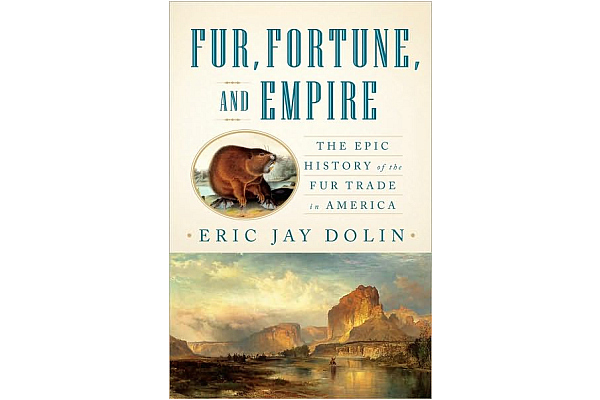The Fur Trade

Anyone who has ever observed a fur trapper separating a pelt from a recently killed animal knows it is a gruesome, painstaking procedure. Yet this very act, repeated countless millions of times, was a surprisingly vital component in the early history of the United States. The hunting and killing of animals for their skins affected the survival of the Pilgrims and their precarious, debt-ridden colony; the relentless exploration of wild places prior to settlement; and the rapid decline and near demise of numerous mammalian species.
Fur trappers were often the first white men to reach remote locales like the Great Salt Lake in what is today Utah, as mountain man Jim Bridger did in 1824. Settlers followed along eventually, sometimes decades later, with the cavalry not too far behind. Disputes over places replete with beaver and other furbearing animals were sometimes a significant consideration as to whether British Colonists would go to war against the French, or later, whether the US would square off with England or native Americans.
As a young British officer, George Washington cut his combat teeth in a dispute with the French over who controlled the rich trapping grounds of Ohio. The first American vessel to circumnavigate the world was carrying sea otter pelts to China. The richest man in America in 1848, John Jacob Astor, made his bundle buying and selling furs. His fortune was estimated to be $20 million to $30 million, the equivalent of nearly $1 billion today.
Eric Jay Dolin’s fifth book, "Fur, Fortune, and Empire: The Epic History of the Fur Trade in America," chronicles in workmanlike fashion the story of the American fur trade from the first beavers taken in New England in the early 1600s to the near extermination of sea otters in the Pacific Northwest and buffalo on the Great Plains more than 250 years later. The book concludes at the dawn of the 20th century, when the mass mayhem is largely over. Target animals have been hunted to the point where large-scale harvesting is no longer economically viable, and states across America have begun to enact regulations against killing fur-bearers willy-nilly. While this effort was better late than never, the damage was largely done. In the 1850s, as many as 60 million buffalo roamed North America; by 1889, barely 1,000 remained.
This grand extermination was fairly predictable: Local extirpation of species began within decades of the arrival of European Colonists. The bad luck for New England’s Castor canadensis (the beaver) in the early to mid-1600s was that felt hats fashioned from its pelts were all the rage in Europe, where the locals were running out of their own beavers. The species had been extinct in England for a century prior to the Pilgrims’ landing. Dolin writes that by the mid- to late 1600s, “Ironically New England, where the English fur trade had begun, was no longer a factor in the growing competition for furs in eastern North America.” New England had largely run out of beavers, too.
While mountain men out West would do some of the fur trapping, and the unimaginable slaughter of the buffalo was done almost exclusively by American hunters, a great deal of the fur trapping described in the book was done by native Americans, who grew fond of what pelts could bring them: guns, metal implements, cloth, wampum, and liquor. And the trading was more or less fair while it lasted. But the sad fact was that once the animals were gone from a region, in order to keep acquiring European trade goods, tribes resorted to selling off their lands, making them increasingly less independent and self-sufficient.
Dolin’s book reads like a lively textbook for a survey course aimed at college freshman. It provides a comprehensive, well-researched, and chronological account of its subject matter without breaking new ground or advancing provocative or revisionist theories. Dolin is dispassionate throughout, which is disappointing in these juiced-up, polarized times.
For example, the story told in “Fur, Fortune, and Empire” could be viewed as a compelling historical case study in why governments must regulate (assuming another such case study is needed after Wall Street’s terrifying shenanigans and BP’s oily behavior). For all its broad geographic and geopolitical scope, the fur trade was essentially what is known today as a “special interest,” accounting in 1833 for less than 2 percent of America’s exports. It was an extractive operation run by plutocrats like Astor who trafficked in a nonessential, luxury product by taking a resource that is seen today, at least, as belonging to society as a whole. But unfortunately Dolin declines to go there.
There are still trappers today, even in New England, and there are still animals to kill. There are more than 500,000 buffalo now, although just a tiny fraction of these are wild and free. The beaver has rebounded, too, although their numbers are perhaps 5 percent of what they once were nationwide.
Three springs ago [2007], a large, brown furry rodent was spied plying the turbid waters of the Bronx River in New York City. After 200 years, the beaver had returned to a former, if now unlikely, haunt.